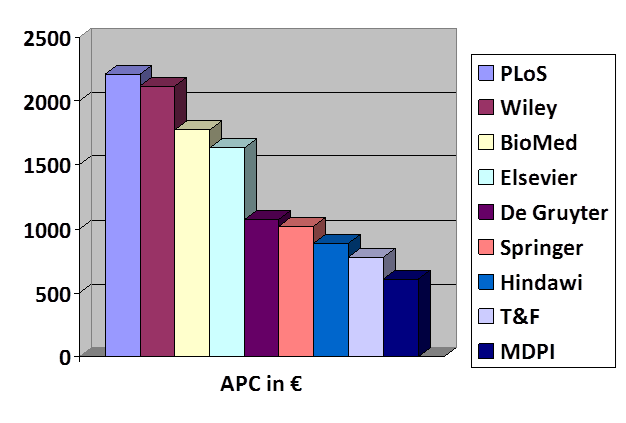43
While a basic mandate to provide scholarly research for free unites all approaches to open access, that does not mean that different communities have not adapted open access principles to suit their needs and values. In the contemporary publishing landscape one can identify several different manifestations of OA that range from those that do as little as possible to disrupt the traditional publishing ecosystem to those that eschew traditional publishing altogether. Starting with green open access, we will dissect the most common approaches to OA and explain the differences between them.

Green Open Access
Green OA refers to the self-archiving of an article (it is still fairly rare for monographs to be published OA at all, and even more rare that they are done so via a green approach) in a publicly-accessible institutional or subject repository (usually after an embargo period).
The central feature of green open access is that authors are still able to participate in the “traditional” publishing system. In this way, green open access does not supplant current academic publishing practices, instead it complements them, allowing researchers who are often incentivized to publish in prestigious closed access journals to continue to meet these obligations while also make a version of their work available to a wider public audience that cannot access the version of record.
For green open access to work, it needs to be supported by the traditional publishers, as it relies on their permission to make a version of the article available in another venue outside of the journal. A publisher’s support for green open access is spelled out in the publication agreement that authors sign with journals upon acceptance of their manuscript. To learn more about publisher agreements, review the Author Rights unit.
Publishing Green Open Access
Green OA relies on the research first being published in a traditional subscription-based journal. This does not necessarily mean any or all journals will allow their authors to re-publish their work under a green OA model. This being the case, an author who would like to publish under the green model must first select a journal that permits self-archiving as outlined in their publisher agreement or must be willing to request such permission from the publisher if such permission is not initially offered. Once an author has confirmed that they have permission to self-archive their work, they will then need to confirm that they have an appropriate version of the work to make available (See: Publisher Agreements and Publisher Negotiations)
Having secured an acceptable version of the work, authors are free to then make that work available in an online repository. While some publishers permit the posting of the work on a personal or departmental website, more commonly they require that the research is posted in either an institutional or disciplinary repository (e.g. cIRcle – University of British Columbia’s digital repository). OpenDOAR is a directory of open access repositories that can help you identify an appropriate place to archive your work.
Green Open Access Embargos
For green OA, publishers often request that authors respect an embargo period (See: Publisher Agreements) before the item is released openly. Because of embargo periods, self-archiving as a method of OA does not allow for the public dissemination of research as quickly as gold OA. As a result, it may be more difficult for authors to comply with OA mandates (imposed by funders or their institutions), which usually include timeline requirements.
Gold Open Access
In its simplest form, gold open access refers to making research freely available immediately upon publication in an open access journal. Unlike with the green model of open access, there is no waiting period during which the work is only available in a toll access journal before being posted online for broad public dissemination. Authors may prefer gold open access as it presents only one workflow and produces only one version of the article. Unfortunately, many authors are deterred from gold open access publishing because prestigious open access journals charge article processing charges (APCs).
Publishing Gold Open Access
Article Processing Charges (APCs)
APCs are fees that authors are expected to pay to cover the cost of publication of their articles. The standard rationale for APCs is that if publishers cannot charge for access to the journal, they need to cover the cost of production somehow and make up these funds by asking the author to cover costs. APCs range in price from a few hundred dollars to thousands, with many prestigious journals charging upwards of $3000. The transfer of payment for the cost of academic publishing from libraries to individual researchers introduces many new complications into an already complex and somewhat dysfunctional publishing system. The range of fees presented by different open access journals leads to another important question about open access; is there an obligation to produce and publish research on a cost-recovery model, or should publishers be free to commercially exploit it? As discussed in the Publication Ecosystem, early open access advocates expected that the internet would result in a marked decrease in the cost of publication based on easier dissemination and a democratization of publishing.

Today, given that well known journals with impressive Journal Impact Factors are often charging the highest APCs, it appears that the significance of the prestige economy was greatly underestimated by these early visionaries.
Paying for Gold Open Access
The introduction of APCs has altered the relationship between publishers and authors because for the first time authors are directly involved in the economic calculus of publishing. Understandably, authors often resent being asked to contribute to the cost of publishing their own research and many simply cannot afford to. In response to the introduction of APC costs various stakeholder groups have come up with strategies to support researchers and cover these new costs. Funders are now allowing researchers to write APC costs into grants, academic institutions are creating APC funds to support their faculty and academic libraries are negotiating new types of access agreements (often referred to as “transformative agreements“) that cover the cost of open access publishing in a specific publishers’ journals.
Unsurprisingly, the transfer of publication costs from subscribers to authors has not solved many of the inequalities built into the academic publishing system. In a discussion on roadblocks to better open access models, David Crotty wrote the following about shifting inequity within the system:
The flaws in the author-pays business model for journals have been evident for more than a decade. The APC model represents a lateral move in terms of access, greatly improving access for readers but shifting the inequity in the system onto authors. It allows everyone to read the work of others, but limits the ability to publish one’s own work to those with sufficient funds to cover the costs of doing so. This greatly disadvantages authors from less-wealthy regions of the world, along with unfunded researchers, and entire fields without the significant funding structures found in some of the sciences that are largely driving the move to APC models. Waiver programs are already under strain, and there seems little willingness among wealthy nations or authors to overpay in order to support their less-well-off colleagues.
Roadblocks to Better Open Access Models, David Crotty, 2019.
Learn more about the economics of publishing.
Selecting an Open Access Journal
While gold open access may be as simple as publishing in an open access journal, for many researchers selecting an appropriate open journal is a daunting proposition as it may require them to consider publication venues outside of those they are familiar with. As mentioned in the Publication Ecosystem module, fear of predatory publishers is another consideration. Luckily many tools have been developed to help researchers identify relevant and high-quality open access journals in their field. Examples include:
- Directory of Open Access Journals: Large database of vetted open access journals across publishers and disciplines. Search by title or field.
- Enago Open Access Journal Finder: Enter your manuscript abstract to help you shortlist trusted OA journals that are the most compatible with your research. Relies on DOAJ to vet legitimate journals.
- IEEE Publication Recommender: Helps you choose a journal from electrical engineering, computing, biotechnology, telecommunications, power and energy and other technologies, in which to publish your research. Open access filters are available.
- Open Journal Matcher: Recommends open journal options based on the abstract for your paper.

